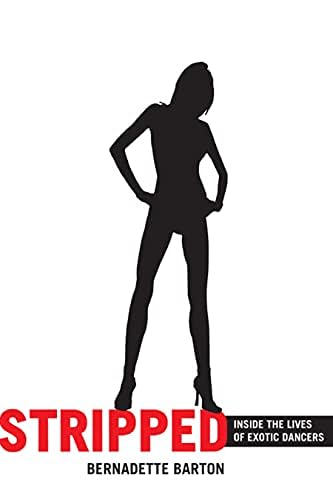October 09, 2006
Stripped
 If you're look for some off-beat reading, Bernadette Barton's Stripped: Inside the Lives of Exotic Dancers might fit the bill. Sorry, no pictures. It's one of the better books I've read lately. The takeaway thesis, I think, is this: Debates about strippers—or sex workers in general—often center on the question of whether sex work is empowering or oppressive. Barton took the radical step of getting to know the workers themselves and finding out. The answer she gets is... it's neither. There are aspects of working in a nude club that are empowering, in some sense, but those same aspects often become oppressive after a period of time.
If you're look for some off-beat reading, Bernadette Barton's Stripped: Inside the Lives of Exotic Dancers might fit the bill. Sorry, no pictures. It's one of the better books I've read lately. The takeaway thesis, I think, is this: Debates about strippers—or sex workers in general—often center on the question of whether sex work is empowering or oppressive. Barton took the radical step of getting to know the workers themselves and finding out. The answer she gets is... it's neither. There are aspects of working in a nude club that are empowering, in some sense, but those same aspects often become oppressive after a period of time.Women begin dancing because they need the money and like the hours. Coercion is subtle but it's there too. Barton talks to dancers who thrive, at least in the short term, on the compliments they get while working. Some appreciate the ability to set boundaries—the "no touching" rule, for instance—something they might have a hard time doing in the outside world, where some level of everyday harassment is deemed tolerable or acceptable. A few women are able to partially overcome past abusive experiences by taking control of their sexuality through stripping, although this is sort of problematic. Some women even find pleasure in performing—in dancing, in dressing up.
But those upsides rarely last long. The compliments inevitably give way to insults, boundaries are violated by "grabby" men, the thrill of dancing yields to achy joints. Anyone who works in a strip club for long enough—Barton identifies the magic time period as roughly three years—begins to break down. I hadn't really thought about it, but rejection wears on a lot of the women. Like, say, nannies, they're doing a lot of emotional labor—trying constantly to please people, being judged on their appearance, being invested in their interactions. It's draining, and little wonder alcoholism and drug use is so rampant.
There's an interesting section on how dancers deal with the social stigma attached to their profession (which can make life tough for their kids at school, lead to discrimination, etc). Some women cope by distancing themselves—both mentally and in conversation—from other strippers. "I don't let customers touch me, but the girls who do make it harder for the rest of us..." There are good strippers and bad, the implication goes. But attempts to marginalize certain dancers just ends up reinforcing negative stereotypes about all dancers. It's a rather vicious trap. There are other strategies women use to deal with the stigma of stripping, but that one stuck out.
Then there are the men. Because stripping is considered tawdry and outside the bounds of moral rectitude, many customers feel entitled to be rude, or obnoxious, or lewd. Dancers are treated as whores, pressured and manipulated in various ways. Customers confuse obligatory flirting with actual desire. Barton's dancers estimate that only 20 percent of customers are "problem clients". That's still a lot, obviously. Anyway, none of this does justice to the book. It's an academic study, and the writing's a bit dry, but it's really very good. Maybe I'll post again when I finish reading it.
